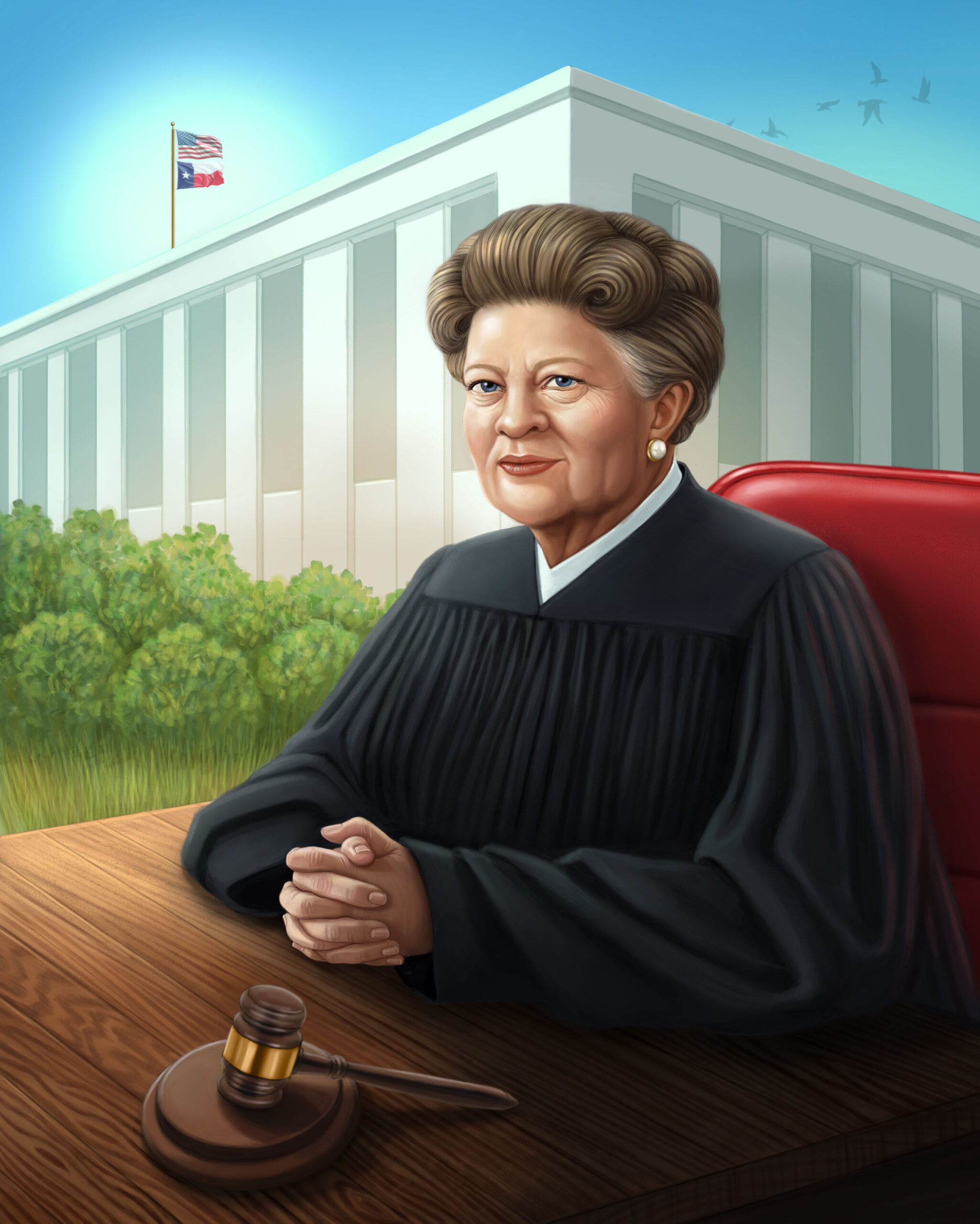One of the few, then and right now.
Written by Liz Anderson Hilton
Art by Laura Salafia

Named to the federal bench by President Jimmy Carter in 1979, Judge Mary Lou Robinson ’50 joined a class of 23 women appointed that year. At the time, only 10 women were serving as federal judges.
Robinson knew from childhood she wanted to be a lawyer. Recalling an elementary school classmate, a Jehovah’s Witness expelled for refusing to say the Pledge of Allegiance, Robinson concluded “things were not always fair, and I saw the law as being a way to have an impact on the system.”
Famously, Judge Robinson presided over a 6-week trial spectacle pitting Texas cattlemen against Oprah Winfrey. The suit alleged Winfrey had unlawfully disparaged Texas beef in a 1996 “The Oprah Winfrey Show” episode on bovine spongiform encephalopathy. Locals sported bumper stickers reading “The only mad cow is Oprah” and t-shirts with Winfrey’s face covered by a red-slash-circle.
Adding to the media frenzy, Winfrey brought her show to Amarillo, taping episodes in the evening after her days in the courtroom.
While the national media circus played on outside, inside, Judge Robinson controlled her courtroom with the same exactitude and decorum as would befit any trial.
Winfrey won on a unanimous jury verdict, while Texas beef producers felt they had been able to set the record straight. Typical for litigants in Judge Robinson’s courtroom, both parties felt respected, heard, and, to some extent, vindicated.
So admired across the political landscape was this Carter-era appointee, that, in 2018, President Donald Trump signed a bill — carried by Senators John Cornyn and Ted Cruz and Representative William ‘Mac’ Thornberry ’83 — naming the federal courthouse in which she had served in her honor.
With that act, the Mary Lou Robinson United States Courthouse in Amarillo became the fourth federal courthouse in America named for a woman.
